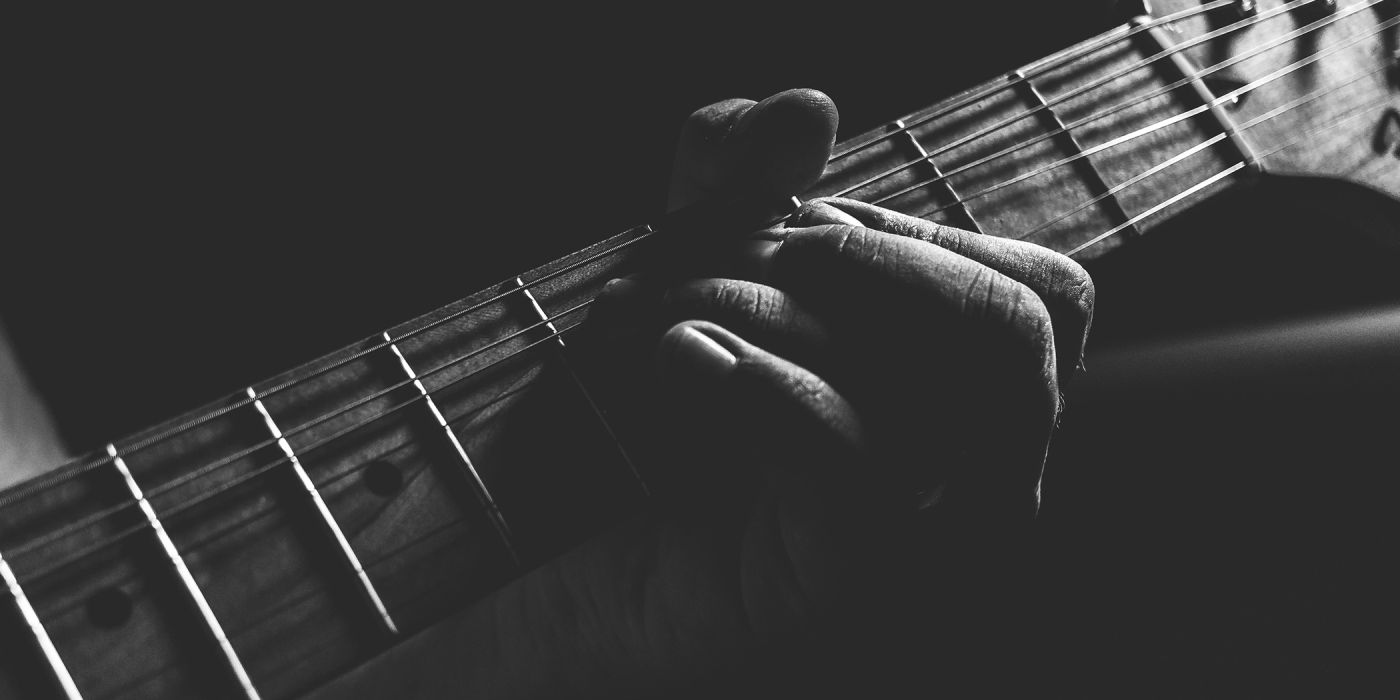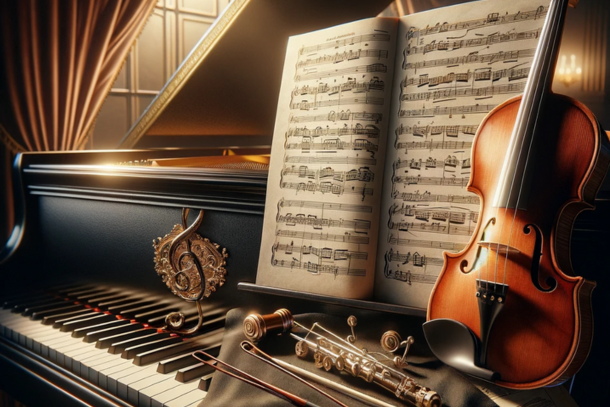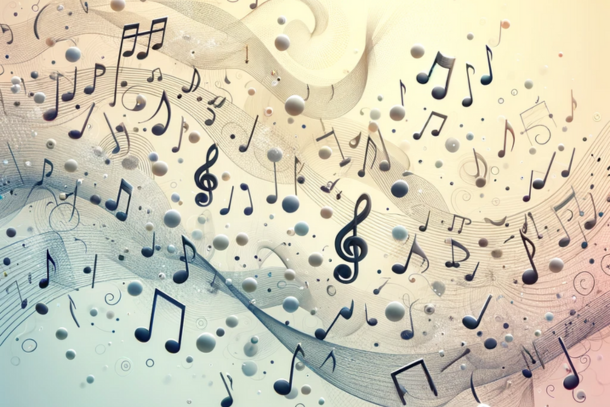Guitar Anatomy and Guitar Parts

If you are wanting to learn how to play the guitar or you are still a beginner, knowing the anatomy of your guitar is incredibly important.
Guitar Anatomy
A guitars anatomy will vary depending on the type of guitar that you are using. An electric guitar will be made of a different anatomy in comparison to the acoustic guitar. However, there are some parts of the guitar that are generic and can be found on most styles of guitar.
Guitar parts:
- Headstock
- Tuners
- Turning pegs
- Nut
- Neck
- Fretboard
- Frets
- Body
- Sound hole
- Bridge
- Saddle
- Bridge pins
This is the correct terminology used to refer to the parts of a guitar, but if you are looking for those parts that are independent of an acoustic guitar or an electric guitar, then we have provided you with a list of those guitar parts.
Acoustic Guitar Parts
An acoustic guitar is a type of musical instrument that is a part of the string family. When the strings are plucked, a vibration is transmitted from the bridge of the instrument sounding out through the top of the guitar, as well as the side and back of the instrument, producing a sound through the sound hole.
It is thought that the guitar originated in Spain around the 16th century, but was first titled the gittern. However, in 1850, the shape of the 'guitar' was formed into what we would recognise today. The change in form and structure, altered its sound and improved the volume, tone and projection. It is due to this that the structure has not really changed much since.
Acoustic Guitar Parts:
- Headstock
- Tuners
- Nut
- Neck
- Fretboard
- Frets
- Fret Markers
- Rosette
- Sound Hole
- Pickguard
- Saddle
- Bridge Pins
- Bridge
- Strings
- Body
Electric Guitar Parts
Electric guitar parts will differ slightly from that of an acoustic guitar. Below we have listed the anatomy of an electric guitar.
- Body
- Bridge
- Pickups
- Neck
- Fretboard
- Tuners
- Headstock
- Nuts
- Frets
- Pickguard
- Strings
- Pickup sector
- Volume & tune knobs
How Many Guitar Strings Are There?
A typical guitar will have six strings, whether that be on an acoustic guitar or an electric one. Each string will have a different thickness. The thicker the string is, the lower the pitch will be and as you travel down the strings, the pitch becomes higher. It is thought that the guitar originally had five strings, but later on, a fifth string was added so that more notes could be played.
A sixth string was then implemented in 1700, which is the version that is most commonly produced today. But, with that being said, there are some guitars that have less, and some that have more.
Bass Guitar
A bass guitar will typically have between four and six strings, but will often have four. It has the lowest pitch out of all the guitars. In terms of tuning, the standard tuning for a 4 string bass is E, A, D, G, which is actually the same four strings that are the lowest strings on a guitar, but an octave lower.
Twelve-string Guitar
A twelve-string guitar has twelve strings. The neck of the guitar will be wider in order to properly accommodate each string and the narrow gaps between each one. The ways in which a twelve-string guitar differs from a normal guitar, aside from the obvious six strings, is because the added tightness of the six additional strings requires the need for stronger reinforcement in the neck of the instrument.
The body is also much stronger and built with a better structure to withstand the tightness of the strings.
Guitar 6 String Tuning
Before playing the guitar or learning how to play chords, you need to ensure that your instrument has been properly tuned. This involves adjusting the strings in order to find the correct pitch. This can be done in a few different ways.
Electric Tuner
An electric tuner involves using a device to find the correct tone. This can be placed on your instrument and it will pick up the sound waves and display what tone it is. Strum the string that you wish is to read and you shall be given the correct answer. This is most likely the easiest way to do this. It is great for beginners and those who are new to learning how they should tune their guitar.
By Ear
This is a traditional and experienced way of being able to tune a guitar. You should always start with the sixth string and match it to a low E. Unless you know exactly what this should sound like, it might be beneficial for you to find something to match it to. This can be through a website or the YouTube links below.
Tuning a Guitar - Standard tuning for a 6 string guitar by Zapp Willa
Bass Tuner - Standard Bass Tuning (E A D G) 4 Strings by Jembass
Guitar Chords
The strings of a guitar will be used to play chords. There are different types of chords and with this comes the different ways we can play them.
Power Chords
These are the easiest chords that you will learn first as a beginner to the guitar. They are very common chords and a lot of classical, rock and modern music that is produced today uses these chords. They can be played on any type of guitar, but are more commonly used on electric guitars.
Open Chords
This is another type of chord that is great for a beginner. They are similar to power chords as they centre in on fewer frets than other notes, making it easier to play. The difference is that open chords will use all of the strings.
Barre Chords
These are different in comparison to the two chords already discussed. They are harder for beginners, but great for those who are able to better handle the position and shape of the chord.
Playing Chords - Guitar F Chord
The F chord is a very popular one and a lot of songs feature this chord, so it is understandable that you would want to be able to perfect it. Starland School of Music has provided an easy way to learn how to play the F chord, otherwise known as the 'Easy F Chord'.
Start by placing your index finger on the 1st fret of the 2nd string. Use your middle finger on the 2nd fret of the 3rd string. Your ring and little finger will play the 3rd fret on the 5th and 4th string respectively. This isn't the full F barre chord, but playing together with other chords will make it unnoticeable.
Playing Chords - Guitar G Chord
The G chord is the easiest to play and one of the most essential. As a beginner, it is really important that you establish how to play the G chord. Chord Bank offers a step by step guide, as followed:
- Place your first finger on the second fret of the 5th string
- Put your second finger on the third fret of the 6th string
- Put your third finger on the third fret of the 1st string
- Strum all six strings
A full step by step guide can be found on their website, here: Chord Bank
So, is Guitar Hard to Learn?
When you are just starting out, learning how to play the guitar can be very difficult, but some will find it easier than others. With that being said, practice makes perfect and the longer you learn, the easier it will become. A lot of people aim to learn how to play the guitar but quit after they realise that it takes much more time and plenty of practice to play the guitar.
If you can push through that difficult stage, then you are more than likely to proceed and achieve success.
Learning how to play the guitar can take anywhere between 1 and 2 months, but this will most likely keep you at the stage of beginner, but far enough that you are able to play beginner songs. However, it is thought that to be able to confidently establish technical chords and play slightly more advanced songs, it is suggested that it should take around 3-6 months depending on the individual ability and the amount of time that is dedicated to the practice.
The abovementioned statistics are taken from Mighty Expert and it is estimated that these figures come from 30 minutes of practice, between 3 and 5 days a week. They have outlined a much more detailed thought process towards this which does as followed:
1-2 months will allow you to achieve basic chords and acknowledge patterns and experience some plucking. You may even be able to start playing some simple and easy guitar songs.
3-6 months will allow you to develop techniques and you should be able to play some more advanced songs and difficult plucking. You may also be able to start reading the sheet music.
12-18 months should be long enough to establish good practice of the basic cords. This means that you can then progress onto more advanced chords. You can start learning new techniques and you should be able to play most, if not all, intermediate/advanced level songs.
18-36 months should have you at an advanced level. You should have your techniques established, you should be able to play pretty much any song and if not, you should be able to pick it up and learn fairly quickly.
Whilst Mighty Expert have laid out these loose time frames, note that everyone is different and some people can learn quicker than others. Do not be disheartened if you learn at a slower rate, it does not mean that you will be unable to pick it up.
Guitar Lessons for Kids - Is It Easier to Learn When We Are Younger?
If you have children, you might be wondering when the best time to get them into guitar lessons is. Whilst we are capable of learning new things at any age, it is thought that the best time to learn how to play to guitar is at around age 7. But generally, there is no perfect age to start learning.
Other factors are important in the process of deciding about guitar lessons for your child. For instance, they should show an interest in wanting to learn an instrument. Without interest, it will most likely be harder for them to learn.
How established is your child's focus? If they can hold their focus, this is a great sign that they are ready to learn how to play the guitar. Your child's ability to possess these qualities can come at any age and this means that any age is suitable for learning how to play, providing they are ready and willing to learn.
Another great result of guitar lessons for kids is the additional benefits that it brings, such as:
Coordination
Your child's coordination will be greatly improved through practising how to play the guitar. It can develop their motor skills like hand-eye coordination.
Determination
If a child is already showing a keen interest in wanting to learn how to play the guitar, the process of learning can help them to develop determination and achieve what they wish to do. They are able to gain great focus skills and learn the art of patience. It takes time to learn an instrument and if they are able to succeed, it provides great skills that they can apply to other areas of their life as they get older.
Confidence
If a child wishes to succeed and they do, this can do great things for their confidence. Although, note that a kid should know their worth is not determined by their ability to succeed in something. Those who play instruments are thought to be able to have much better communication skills.
Academics
Research has proven that children who have learned how to play an instrument are more likely to graduate and are even more likely to go and attend college or university. This is because it is thought that children who have taken or are in music lessons have an overall higher set of cognitive skills, meaning that they have higher grades and much more ambition to succeed.
Related to this article are the following:
- 10 Benefits of Learning to Play a Musical Instrument: A Harmonious Journey Towards Personal Growth
- From Headstock to Bridge: Exploring the Intricate Anatomy of a Guitar
- Songs to Learn on Guitar: Beginner, Intermediate and Advanced
- What are the Easiest Instruments to Learn? Easy Piano Songs
- What Is The Best Way To Learn Guitar? Self Taught vs Guitar Lessons
I do hope you have enjoyed this article and hope that you will subscribe to my newsletter so you can get the latest information about all things naturally relaxing.
Stay in touch, join the Naturally Relaxing Newsletter
Newsletter Signup
Post Your Comments
or post as a guest
Be the first to comment.
Latest articles in Music

Serene Symphony: Exploring 10 Timeless Classical Pieces for Unwavering Tranquillity

The Best Music for Meditation: A British Expert's Guide to Deepening Your Practice

The Best Music for Studying: An Expert's Guide to Optimal Concentration & Memory Boost

Melody & Dreams: The Musical Route to a Restful Night

The Healing Power of Music: Combatting Stress & Anxiety in Modern Britain






